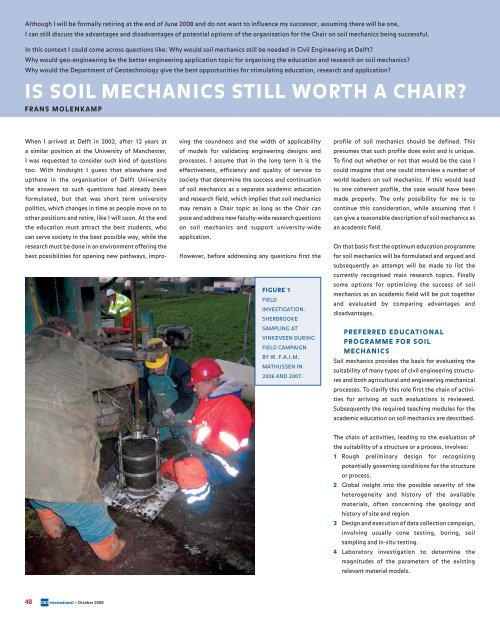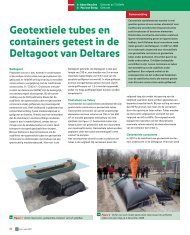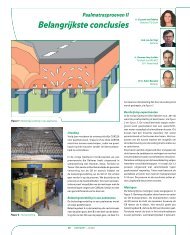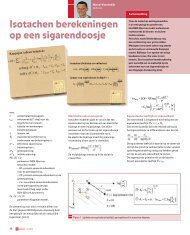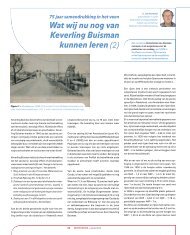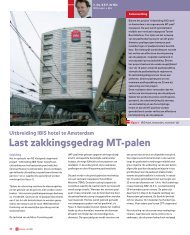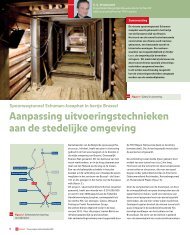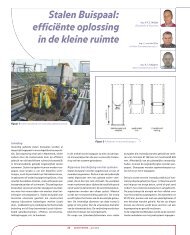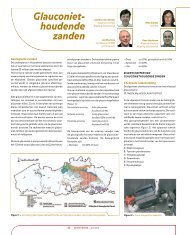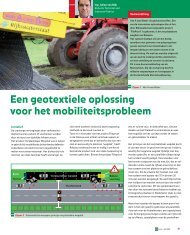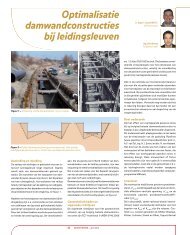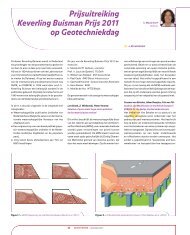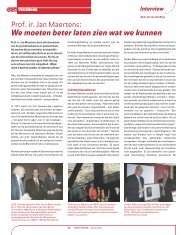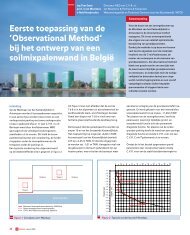i137 GEO binnen - GeoTechniek
i137 GEO binnen - GeoTechniek
i137 GEO binnen - GeoTechniek
Create successful ePaper yourself
Turn your PDF publications into a flip-book with our unique Google optimized e-Paper software.
Although I will be formally retiring at the end of June 2008 and do not want to influence my successor, assuming there will be one,<br />
I can still discuss the advantages and disadvantages of potential options of the organisation for the Chair on soil mechanics being successful.<br />
In this context I could come across questions like: Why would soil mechanics still be needed in Civil Engineering at Delft?<br />
Why would geo-engineering be the better engineering application topic for organising the education and research on soil mechanics?<br />
Why would the Department of Geotechnology give the best opportunities for stimulating education, research and application?<br />
IS SOIL MECHANICS STILL WORTH A CHAIR?<br />
FRANS MOLENKAMP<br />
When I arrived at Delft in 2002, after 12 years at<br />
a similar position at the University of Manchester,<br />
I was requested to consider such kind of questions<br />
too. With hindsight I guess that elsewhere and<br />
upthere in the organisation of Delft University<br />
the answers to such questions had already been<br />
formulated, but that was short term university<br />
politics, which changes in time as people move on to<br />
other positions and retire, like I will soon. At the end<br />
the education must attract the best students, who<br />
can serve society in the best possible way, while the<br />
research must be done in an environment offering the<br />
best possibilities for opening new pathways, impro-<br />
48 <strong>GEO</strong>international – October 2008<br />
ving the soundness and the width of applicability<br />
of models for validating engineering designs and<br />
processes. I assume that in the long term it is the<br />
effectiveness, efficiency and quality of service to<br />
society that determine the success and continuation<br />
of soil mechanics as a separate academic education<br />
and research field, which implies that soil mechanics<br />
may remain a Chair topic as long as the Chair can<br />
pose and address new faculty-wide research questions<br />
on soil mechanics and support university-wide<br />
application.<br />
However, before addressing any questions first the<br />
FIGURE 1<br />
FIELD<br />
INVESTIGATION.<br />
SHERBROOKE<br />
SAMPLING AT<br />
VINKEVEEN DURING<br />
FIELD CAMPAIGN<br />
BY IR. F.A.J.M.<br />
MATHIJSSEN IN<br />
2006 AND 2007.<br />
profile of soil mechanics should be defined. This<br />
presumes that such profile does exist and is unique.<br />
To find out whether or not that would be the case I<br />
could imagine that one could interview a number of<br />
world leaders on soil mechanics. If this would lead<br />
to one coherent profile, the case would have been<br />
made properly. The only possibility for me is to<br />
continue this consideration, while assuming that I<br />
can give a reasonable description of soil mechanics as<br />
an academic field.<br />
On that basis first the optimum education programme<br />
for soil mechanics will be formulated and argued and<br />
subsequently an attempt will be made to list the<br />
currently recognised main research topics. Finally<br />
some options for optimizing the success of soil<br />
mechanics as an academic field will be put together<br />
and evaluated by comparing advantages and<br />
disadvantages.<br />
PREFERRED EDUCATIONAL<br />
PROGRAMME FOR SOIL<br />
MECHANICS<br />
Soil mechanics provides the basis for evaluating the<br />
suitability of many types of civil engineering structures<br />
and both agricultural and engineering mechanical<br />
processes. To clarify this role first the chain of activities<br />
for arriving at such evaluations is reviewed.<br />
Subsequently the required teaching modules for the<br />
academic education on soil mechanics are described.<br />
The chain of activities, leading to the evaluation of<br />
the suitability of a structure or a process, involves:<br />
1 Rough preliminary design for recognising<br />
2<br />
potentially governing conditions for the structure<br />
or process.<br />
Global insight into the possible severity of the<br />
heterogeneity and history of the available<br />
materials, often concerning the geology and<br />
history of site and region<br />
3 Design and execution of data collection campaign,<br />
involving usually cone testing, boring, soil<br />
sampling and in-situ testing.<br />
4 Laboratory investigation to determine the<br />
magnitudes of the parameters of the existing<br />
relevant material models.


